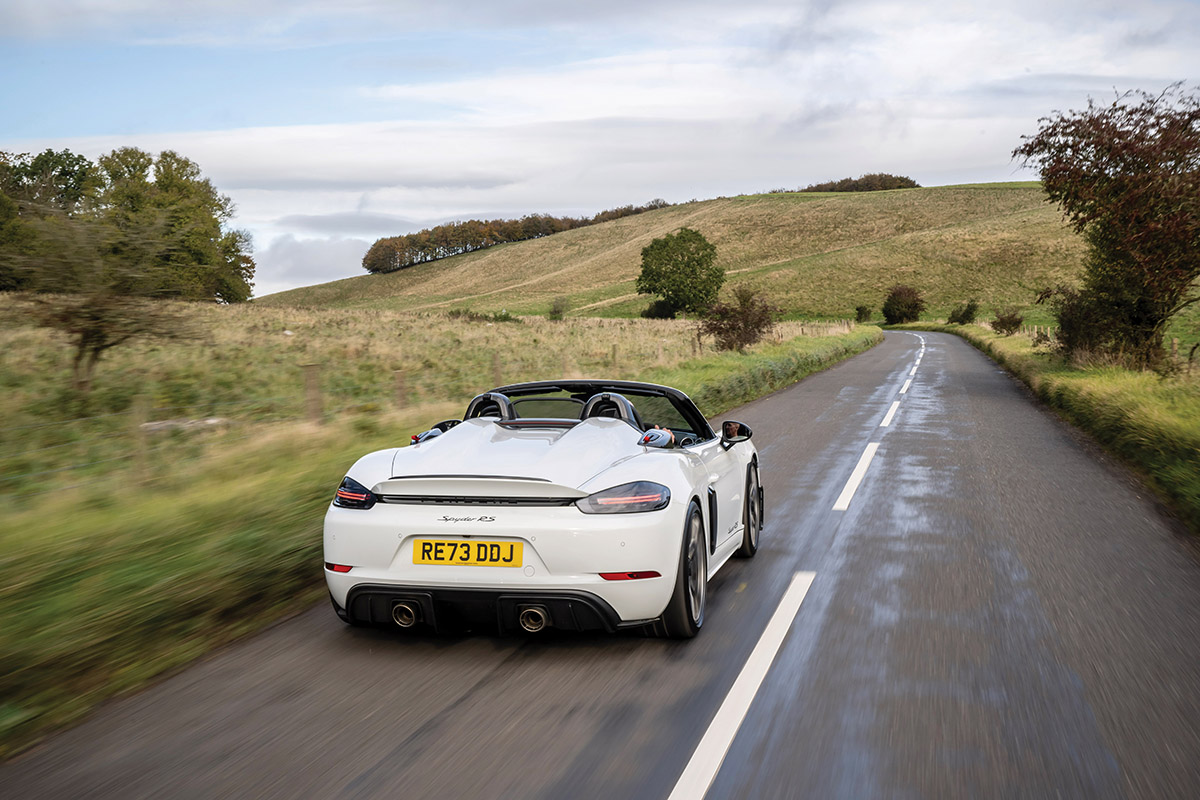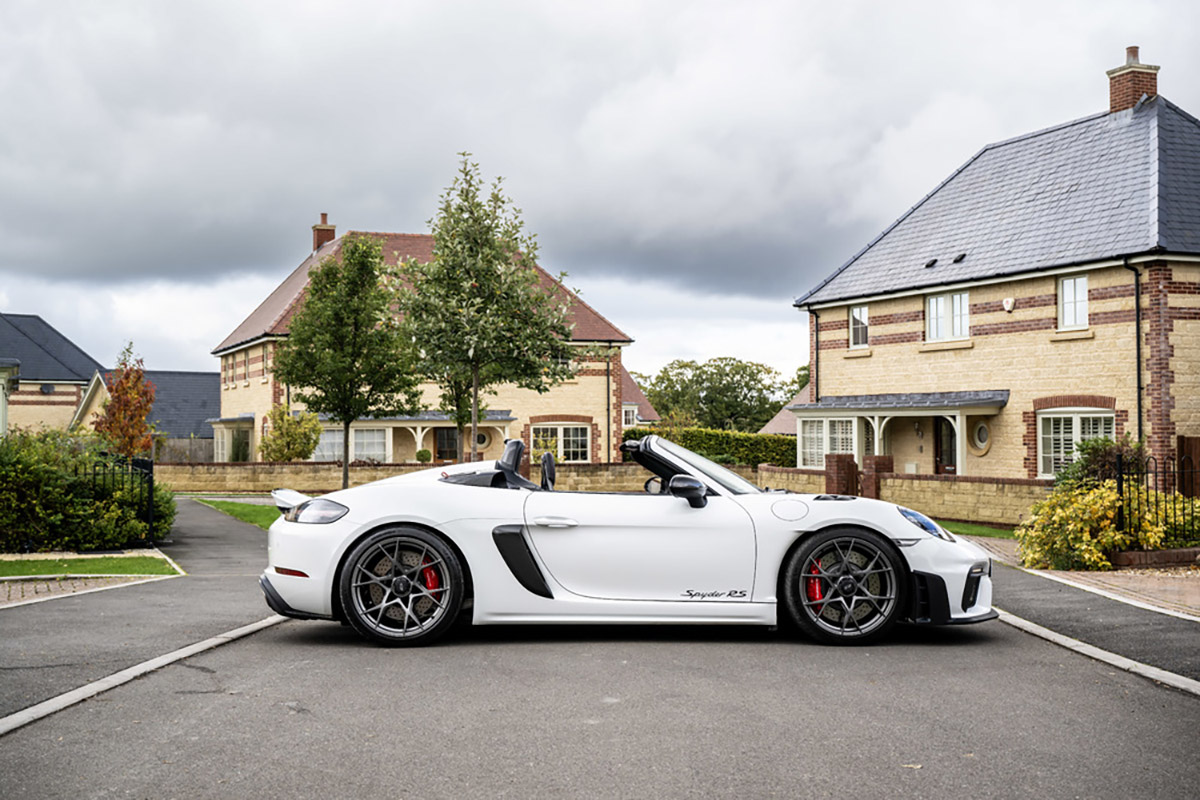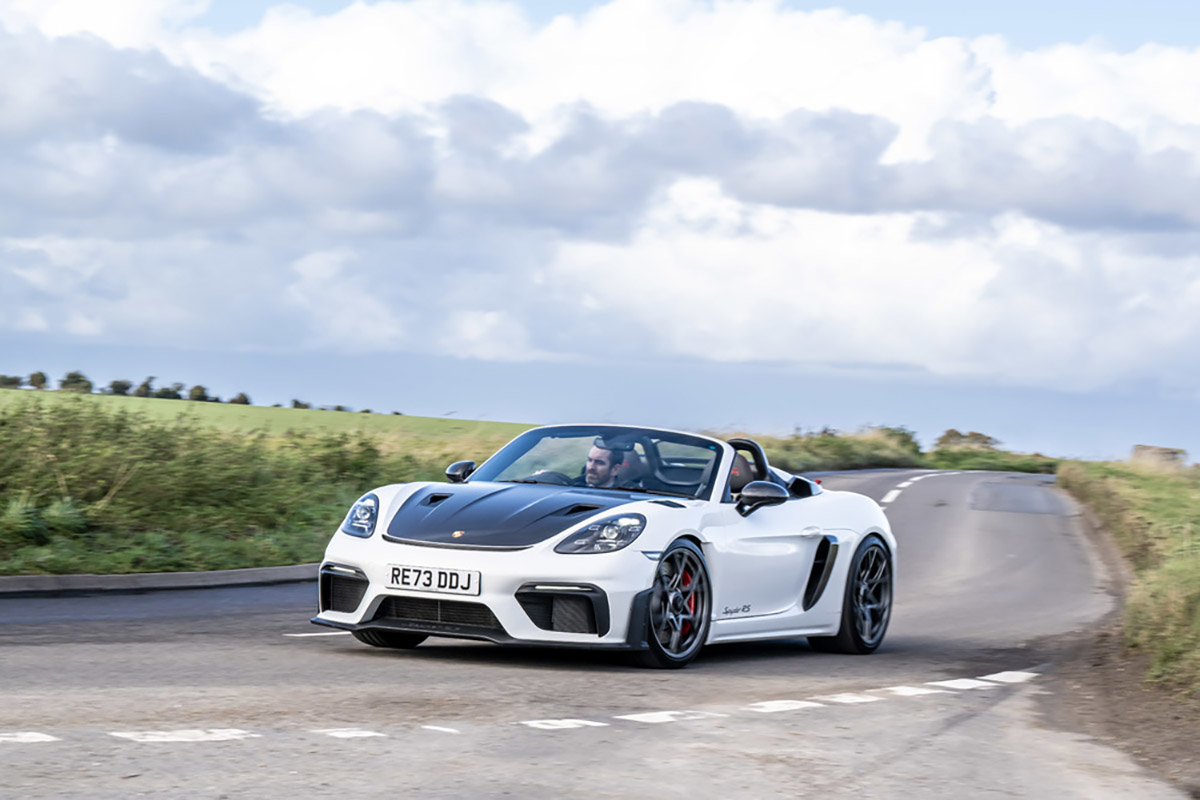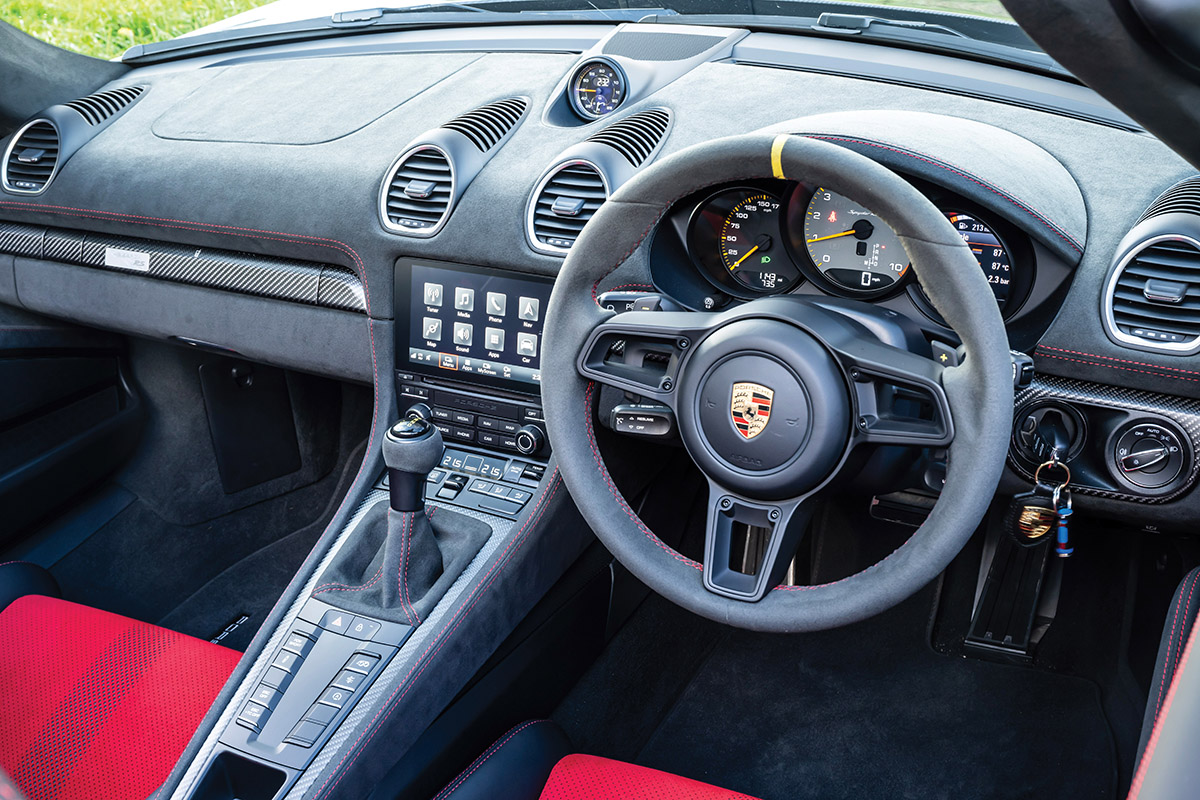The successful electrification of sports cars remains hypothetical, even as Porsche is busily readying the 718’s replacement. If and when the ban on combustion engines comes into force and the market for sports cars as we know it hits a hard stop, cars like the 718 Spyder RS are going to seem very precious – but to what exact extent depends on the execution of that incoming mid-engine EV. In the meantime, we drink up what’s left and, in Porsche’s case, that’s the strongest, least diluted share at the bottom of the ICE barrel. Nothing is being kept back any more, and for that we can be very grateful.
When Porsche released the 718 Cayman GT4 RS, much was made of the fact that the Rennsport moniker had finally made it to a mid-engine product. That and a proper GT powertrain gave the little coupé a staggering increase in power and performance as well as an aural drama seldom heard this side of the pit wall. The GT4 RS was so raw and uncompromising, so cacophonous and dialled-in, that it immediately felt out of sorts on the public road. All credit to Porsche, then, for not backing it off one inch when it built it and for finding balance elsewhere in the 718 Spyder RS. Here is a car that deserves to be similarly revered, irrespective of its fin de siècle timing; all the things that made the GT4 RS great, minus all the things that made it a bit of a chore.
At first glance, the Spyder RS is a confusing proposition, still borrowing heavily from motorsport with its splitters, fins and swathes of bare carbon, yet de-winged and roof-less now, presumably giving away weight, rigidity and downforce in the process. But this contradiction is what lies at the heart of the car, and is precisely what makes it so good. Better, even, than the Cayman. There. It’s been said.

Both cars share the 4.0-litre flat-six from the 911 GT3, complete with 493bhp, 450Nm and that properly unsettling 9,000rpm redline. The standard seven-speed PDK comes with Torque Vectoring and a mechanical rear diff, the combined results of which return official figures of 0-60mph in 3.2 seconds and a top speed of 191mph.
The Spyder RS weighs 1,410kg, actually a few kilos less than the Cayman equivalent because it doesn’t have the traditional folding roof and complex motorised mechanism of a normal Boxster. And since the 718 platform is inherently stiff, designed from the off as an open-top concept, it doesn’t require reinforcement to achieve exceptional torsional rigidity.
As for the aerodynamic package, that fast fixed rear wing has been replaced with a small ducktail on which you will also find a smaller-still carbon Gurney flap. The front splitter is also shorter and less extreme, and the GT4’s underbody aero has been removed altogether. So there is less downforce, but when did that matter on a road car?

Inside, it’s familiar GT RS territory, the now-dated yet still entirely functional (and arguably preferable) analogue fascia surrounded by Race-Tex everything and you at the heart of it all, hunkered down in a deep, carbon bucket. But the absence of a roof over your head is about to change everything, and in ways you might not immediately expect.
The first thing you notice as you point the Spyder RS up the road is that the resonance in the Cayman’s cockpit, always memorable but quickly tiring, is gone. What you’re left with is the same strange and addictive symphony, performed at an agreeable distance. It’s a revelation, allowing you to enjoy everything that is wonderful about this all-time-great engine note without it beating you over the head.
The other transformative aspect of the Spyder RS, the second great distinction that really makes this a better car than the Cayman, is the ride. Porsche decided to create a clear division between the two cars by preserving the track-focussed chassis set up for the GT4 RS and giving the Spyder RS something much more suited to road driving. The results are marvellous. In backing off the spring rates and the adaptive damper settings, the Spyder RS enjoys a more relaxed and suppler ride even in Sport, making it feel at once far more settled on a typically iffy B-road and less exhausting to push over distance. Unexpectedly, the unforgiving track car beneath has matured into something with touring potential – considerably more so than, say, a GT3 Touring.

But don’t let the idea of a softened-off chassis suggest that the overall package might be in any way diminished. The Spyder RS feels every bit as fast as the Cayman, its lightning-quick gear changes allowing you to tap up indecent levels of in-gear acceleration at any speed and at any point in that over-generous rev range. This is another thing that plays to the Spyder’s strengths: you can use the powerband to drive it like it’s your last day on Earth or just lean back on it and let the ample torque create a sense of calm and comfort that’s unthinkable in the GT4 RS.
Roof down, this is a car that’s supernaturally rich in character, notwithstanding the external sensory stimuli that come with open-air motoring. So much power underfoot, such tactility from the steering and brake pedal, and all with that layered and addictive exhaust note – it’s an experience you can’t forget in a hurry. That sounds like an apposite conclusion for the 718 series, with the Spyder RS wearing the ‘last ever’ label for mid-engine combustion.
There are, however, some small but not insignificant consumer caveats to consider. The roof is a bit of a faff and a two-person job – not what you want if the heavens have opened. Creating a fully weatherproof three-part folding soft top that weighs only 8kg and can still be stowed above the taller GT engine is an ingenious bit of problem-solving, but the fiddle is sufficient that it might make you think twice if the weather looks unpredictable.

The price warrants a mention too. For anyone lucky enough to get a build slot, list starts at £123,000 and that’s before the obligatory Weissach pack that includes a carbon bonnet, titanium exhausts etc. That’s another £9,000, the magnesium wheels that go with it a further £11,500. Speccing your Spyder RS correctly can quickly become very expensive then, but what price do you put on the ultimate 718? Certainly, anyone who hasn’t bought direct from the factory can look forward to paying eye-watering overs in the months to come.
So, it’s a staggeringly good car and arguably the finest of the current GT crop, but is the last 718 the best one? Horses for courses. In making the Spyder RS a road car through and through, Porsche unwittingly brings the spotlight back to its PDK dilemma. It’s easy enough to accept that the GT4 RS suits a paddle shift but, when you’re open to the elements, drinking in the sounds and smells and focussing on the sat nav and not the stopwatch, what’s sorely lacking in the ultimate road car is the GT3’s six-speed manual transmission. You can have a stick in the GTS 4.0-litre for £75,000 – half the money of a full-fat Spyder RS, but by no means half the car.